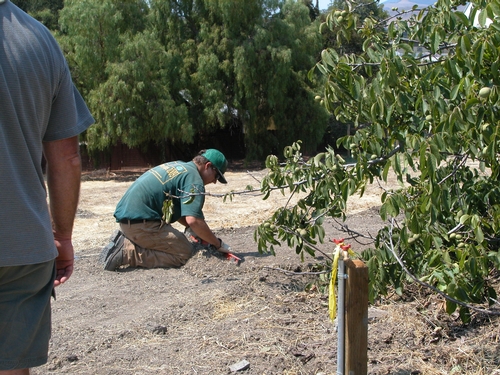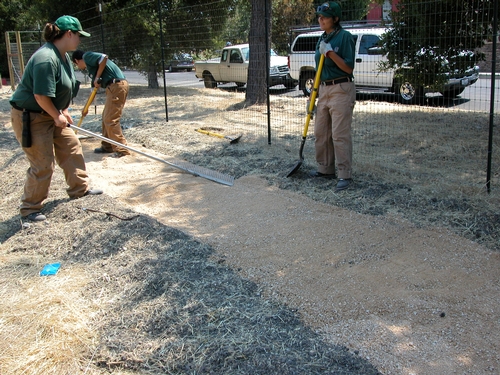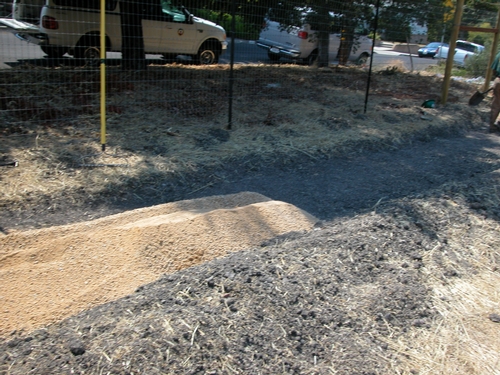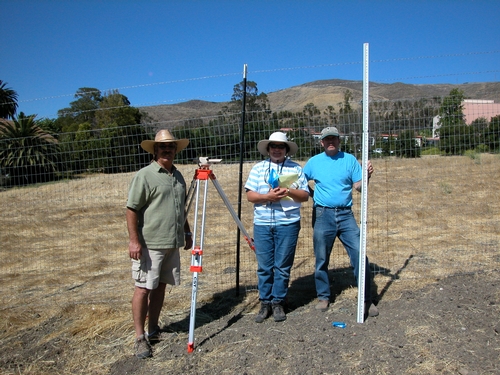- Author: Jim Borland

Everybody knows that plants can die of thirst, but don't forget you can also send them to an early grave by overwatering. When we overwater, the soil becomes saturated and forces out vital oxygen, and we literally drown our plants. So then how do we know when to water our plants? Here are some simple and useful methods that should help.
First thing to do is make a close observation of your landscape plants. A plant's stress symptoms which indicate it is too dry include wilting or folded leaves, dull or gray-green foliage, leaf drop, and new leaves smaller than normal. These symptoms often first appear during the hottest time of the day, but before you automatically add water, check the soil moisture first!
The soil can be checked by the "feel" test where you dig down 6 to 8 inches in your garden, grab a handful of soil from that depth and squeeze it in your hand. Moist soil will feel very cool to the touch. Both the tactile sensation and your analysis will vary for different soil types, but we can summarize by considering two broad categories: sandy loam and clay soil. Sandy loam has poor moisture retention characteristics, so if you squeeze that soil and have some moisture on your hand, and if the dirt forms a weak ball, there is a good amount of moisture available for your plants. Clay soil, on the other hand, is excellent at retaining moisture so it will form a tight ball and feel slick when there is an adequate amount of moisture present.
You can also purchase small, portable soil moisture meters for
determining when to water, which cost pennies and are available at local garden centers. There's new technology in irrigation controllers, referred to as "Smart" controllers which use current weather conditions being delivered from nearby weather stations and adjust automatically. They also have the capability of having underground probes buried at root depth, to signal the controller to begin an irrigation cycle. This is not only helpful in giving your plants the optimum water, but helps to conserve water during the rainy season.
Determining whether a plant needs water is always a judgment call. With practice and good observation skills you can have a healthy, properly watered garden.
- Author: Chris Cocchiaro
Here is an update; I have included all the data for the winter so far. Overall, it looks like a pretty good rainfall year, and no frost. Remember the Rainfall calendar is July 1 through June 30th, so we do not have complete data as the station was brought online in November. We will continue to download and publish the data quarterly, but feel free to ask for more details.

Data for the station between 11/20/2009 and 3/22/2010:
High Temp = 26.7 C/80.1 F (on 03/17/10 at 3 pm)
Low Temp = 0.7 C/33 F (on 12/09/09 at 6 am)
Highest Wind Gust = 36.62 mph (on 01/20/10 at 11 am)
Rain gauge = 624.25 mm/24.58 in
Largest single rain measurement:
18 mm/0.71 in one hour on 01/20/10 at 12 pm (interestingly right after the Highest Wind Gust)
- Author: Amy Breschini
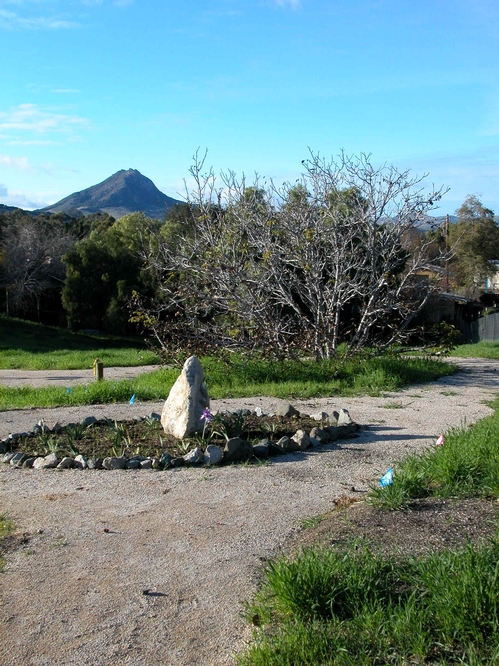
By Mary Bianchi UCCE Horticultural Advisor
Advice to Grow By From UCCE Master Gardeners
Do you need gardening advice to help you grow a more sustainable garden or landscape? The University of California Master Gardeners are proud to invite you to our newly created Demonstration Garden for our inaugural "Advice to Grow By" program! Monthly workshops will be held every third Saturday, beginning January 16, from 10 am to noon at the Demonstration Garden. The Garden is located at 2156 Sierra Way in San Luis Obispo, immediately north of the UCCE office, and represents a cooperative project between the County of San Luis Obispo and the University of California.
The creation of the UCCE Demonstration Garden provides a living classroom for the community where Master Gardeners can support sustainable landscape practices with our "Advice to Grow By" workshops. Local gardeners will learn from the Master Gardeners as the many projects in the Garden are developed. Look for upcoming workshops on orchard planting techniques, designing a kitchen garden, and creating raised beds.
Our January 16th workshop on "Capturing Rain Water in the Landscape" will demonstrate landscape practices that help to conserve our precious water resources. Sustainable water conservation practices are important activities for San Luis Obispo County gardeners, even as we enjoy our recent rains. We will be demonstrating rain harvesting techniques including rain barrels, and discussing rain gardens for Mediterranean climates and storm water management practices that protect water quality while keeping rain water on the site. Our February 20th workshop will demonstrate orchard design and fruit tree planting techniques.
Mark those brand new calendars as a reminder to join the Master Gardeners each third Saturday of the month for the advice you need to grow your own sustainable landscape! Gardens large or small, for flowers or food, the Master Gardeners have the help you need. Follow our "Advice to Grow By" calendar at http://ucanr.org/slomg.
Got a Question?
Contact the University of California Cooperative Extension Master Gardeners: at 781-5939 from 1 to 5 p.m. on Monday and Thursday; at 473-7190 from 10 a.m. to noon in Arroyo Grande; and at 434-4105 from 9 a.m. to noon on Wednesday in Templeton. Visit the UCCE Master Gardeners Web site at groups.ucanr.org/slomg/ or e-mail mgsanluisobispo@ucdavis.edu.
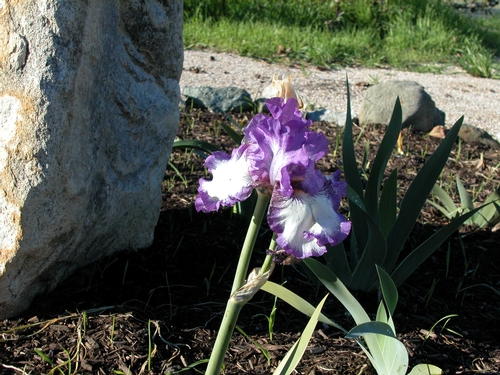
- Author: Amy Breschini
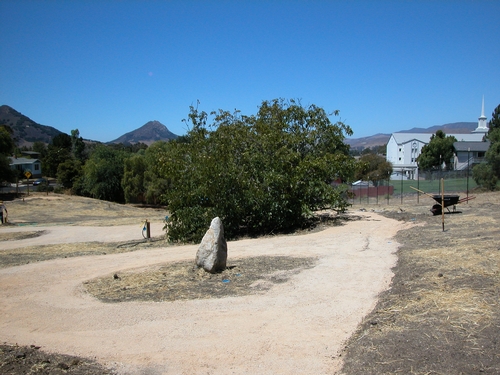
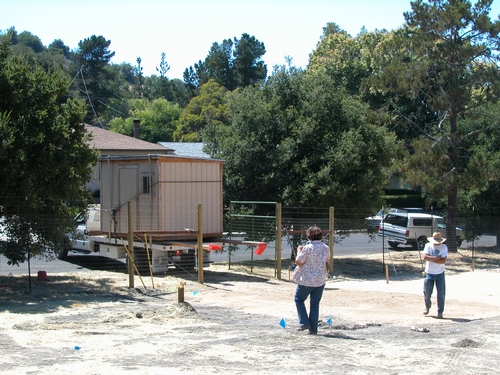
So excited! Here's the truck backing in with the delivery of the garden shed. We were so fortunate that Susie got a great discount on it from Oak Country Lumber and Ranch Supply in Santa Margarita because it was one of their samples in the store. At this point I'm wondering how on earth we will unload this thing!
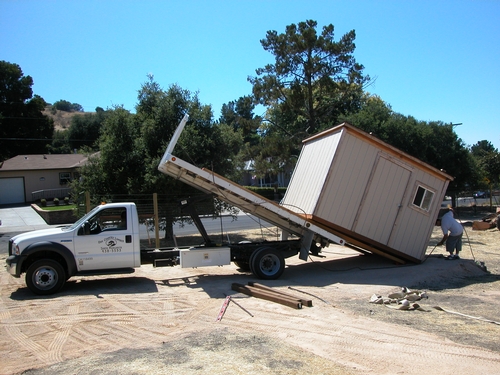
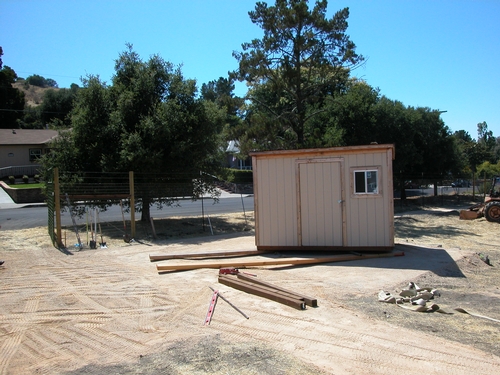
It was moved into final position by two boards with a pipe in between.
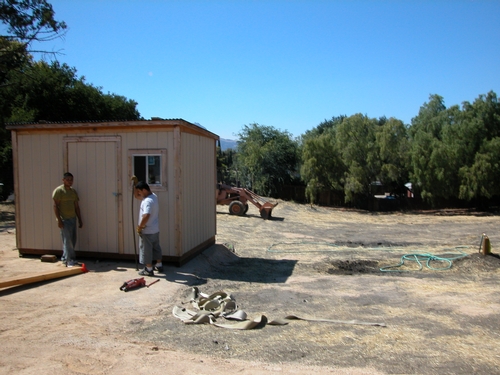
The delivery guys- who made it look easy!
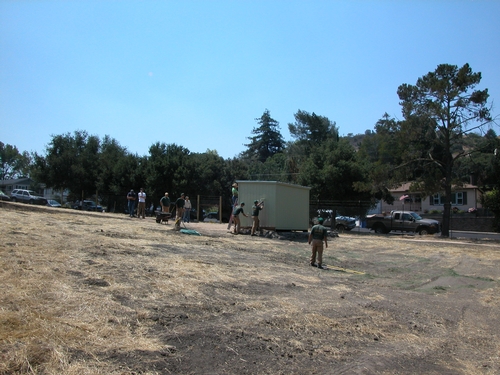
A beautiful coat of green paint was applied!
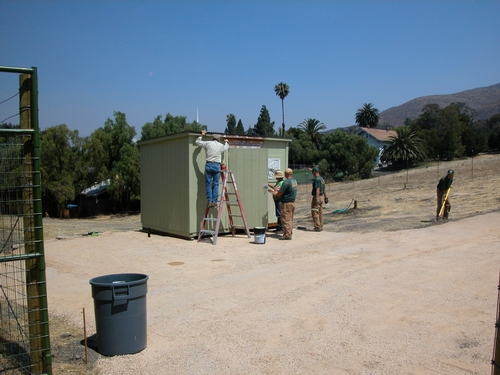
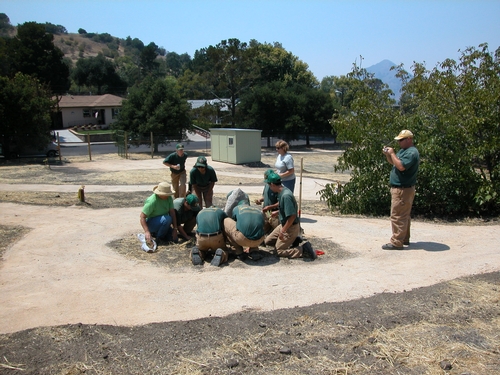
The final project for the day was planting iris around the rock.
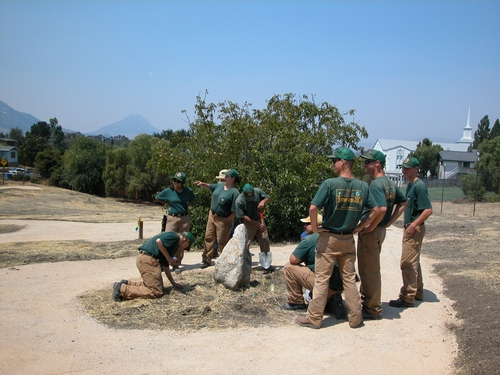
The kids were proud, happy and tired by the end of the week!
- Author: Amy Breschini
So much has happened!
Here's a little summary of the garden to date:
(Please forgive me if I forgot someone or something...things are moving and shaking now! A special thank you for Susie who has been recording everything daily! Much of this was extracted from the communication that she has been doing with the Demo Garden Committee! Please feel free to comment on the post if you believe I forgot something or if there are any corrections.)
Weds. July 8: An irrigation committee (Ray and Wes from the new class are the expert leads along with our architect Scott Dowlan, and the Giambalvo bros.) met to lay out a plan of attack!
Tuesday, July 14: Wes, Ray, Ed, Susie, and Thorv met with Mary B. to go over details of the installing the irrigation. We've had an "all clear" from the utility companies that there are no underground utilities present on our site!
Thursday, July 16: Wes, Ray, Bill, Ed, and Thorv mapped out with blue spray paint the lay out of the irrigation system
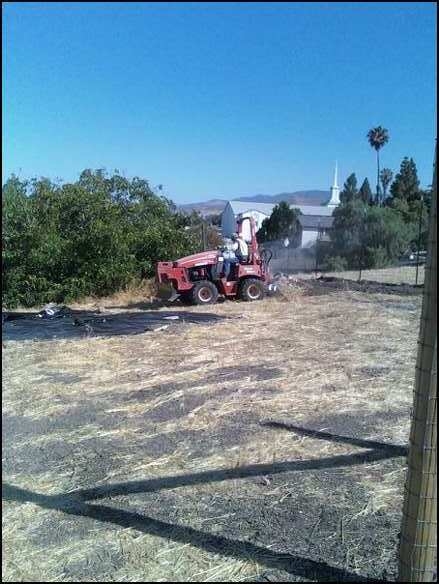
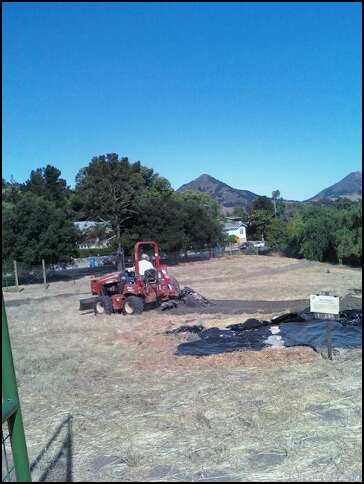
Friday, July 17: Trencher was brought in from United Rentals as a donation coordinated by Wes! The entire layout was trenched out from 8:30- 10:30am. Bill helped out this afternoon with shoveling!
Saturday, July 18: Irrigation assembled and installed all with tracing wire by Wes and Bill and supported by Susie and Thorv. Wes received a donation for all of the pipe from Farm Supply San Luis Obispo! System was fully checked for leaks. 6 Hose bibs and 4 valve box manifolds. There are ball valves at all 4 corners of the irrigation, so there's easy shut off in the case of a leak. The pipes that are near any old underground rocks or concrete have been insulated so that there's will be no rubbing or contact with abrasive edges. We owe Wes and Bill a very big thank you for all of there expertise and hard work! We have our own water meter that will track the water used for the garden and great water pressure! Yippee!!!
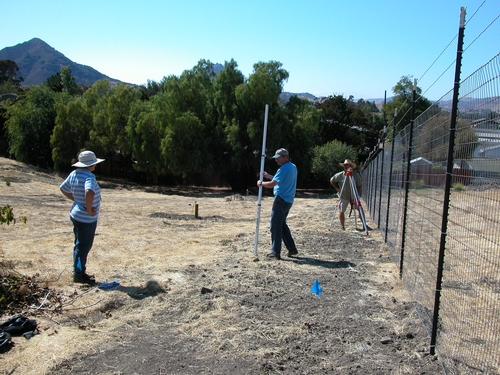
Pathways: There's lots of rules and regs to meet the American's with Disabilities Act compliance. Many excruciating hours were spent surveying the area with Ed, Ray and Susie to find the best pathways possible to meet this compliance! Here's a link for more information about the regulations for ADA compliance:
http://www.ada.gov/reg3a.html#Anchor-18203
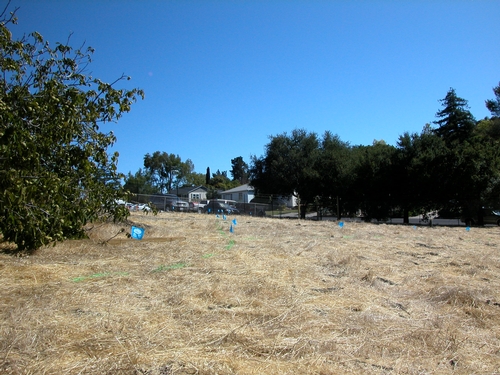
Monday, August 10: We were lucky enough to have the CCC Youth Group come for a week to help out! They arrived about 9:00am! Thorv, Marylou, Susie, Ray, Ed, Mary and Amy were present. Thorv did a very nice job of explaining to them what the mission of the MG program is about and how we hope to use the demo garden. Then Ed and Ray showed the group how to use the transom to map out ADA compliant pathways and spent the rest of the day helping to supervise the crew. They started out the raking out the soil at the utility pad area and all the pathways and using the soil compression vibrator- which broke its' belt almost immediately! Once that was fixed, then the engine kept flooding.. so there's always a few little bumps in the road. Ray coordinated borrowing the county golf course compactor for the next couple of days. He’s not sure if they will stay on schedule right now, but the DG is being deliverered tomorrow! There's a whole lot of surveying and using levels. It's very challenging and Ray and Ed are really doing an awesome job at meticulously checking and rechecking our grade to meet the ADA compliance!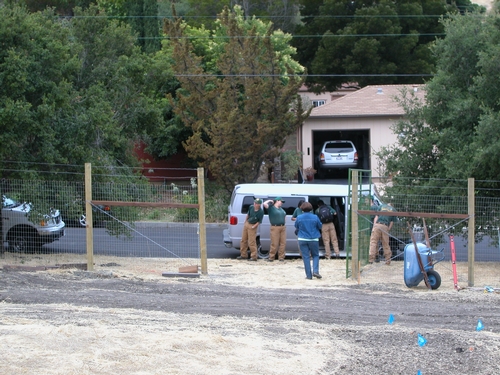

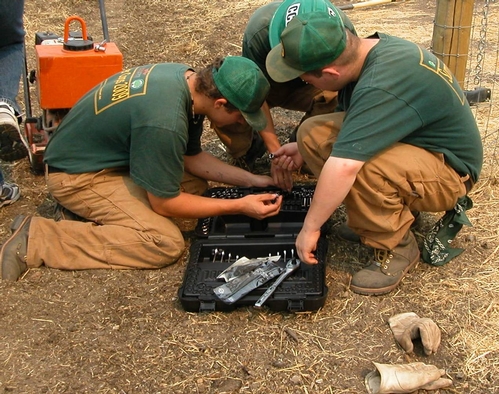
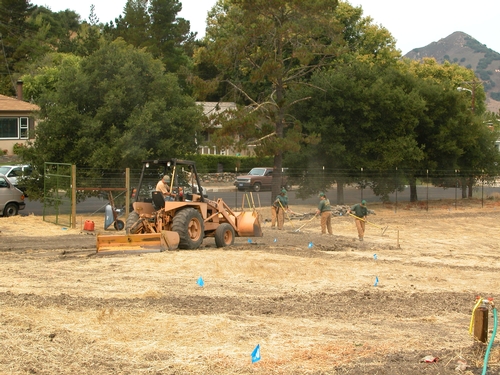

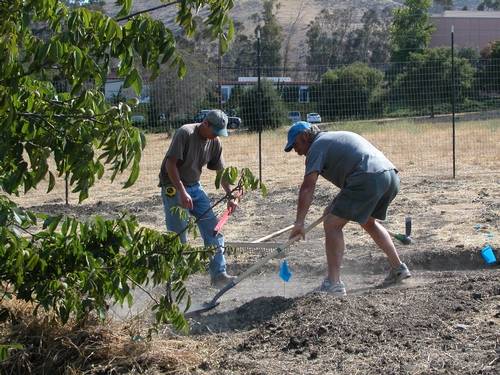

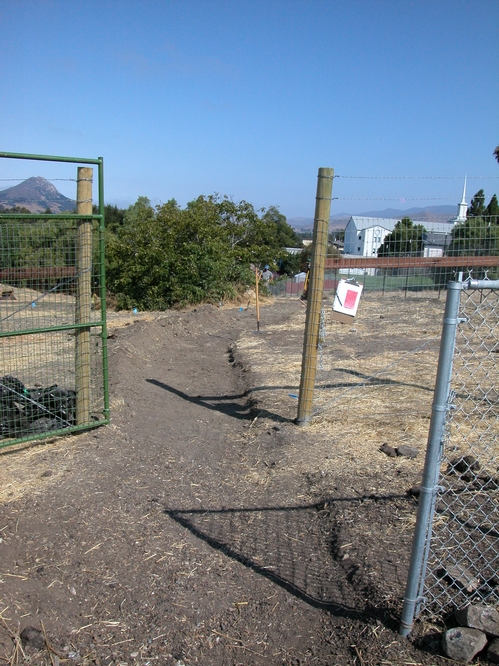
Tuesday, Aug 11: Fifty tons of decomposed granite was delivered to our garden. Ray and Ed were again on site to help supervise the youth crew (four called in sick today) .... we had a reduced number of workers but we still made progress on the pathways. Nell was there in the morning to help with snacks and to serve lunch. Carol Dulitz served a wonderful lunch of tacos, beans, cookies and ice cream. Jutta brought boxes of fruit. The crew members are so appreciative of the special care they are receiving from our MG's. After lunch Susie taught a lesson on invasive species and the purpose of the trapping program of SLO county.
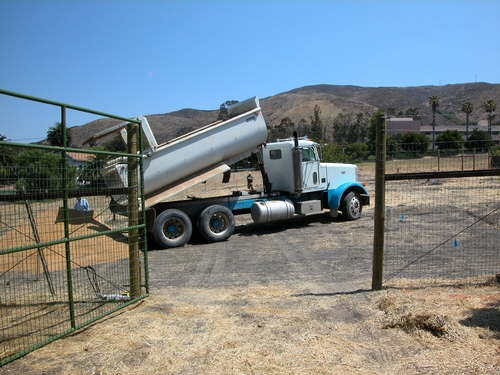
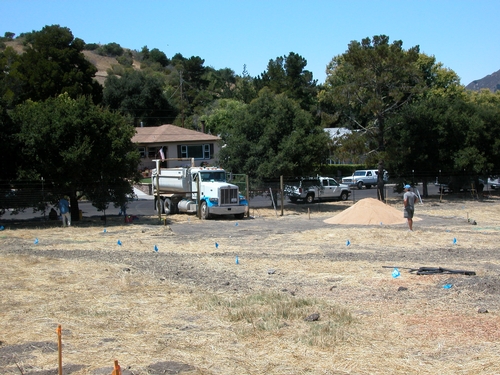
Weds, August 12: Another productive day in the garden! Today we finished putting most of the DG on the pathways and utility area....it looks great! We even have a special focal point! Ray and Ed continued to supervise the troops and we really owe them a vote of thanks. Wes came out this afternoon and did some needed tractor work. Alice brought some wonderful snacks for the crew and Jutta bought pizza for lunch. Nell was there in the morning and Susie was there in the afternoon to help serve and clean up. Wes also did a great lesson for the crew on irrigation systems and how ours was put together. Then Mary had the crew making mud pies as she taught them lessons on how to tell the difference between soil types and she did a great demo on soil erosion. Scott, the landscape designer that did our initial plan came out to see what we have done so far and seemed to be pleased.
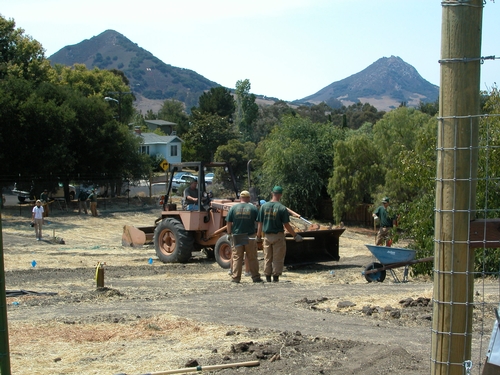
Thursday, August 13 Major progress was made on the pathways! The kids are getting burned out. Today was 94F early in the day with no breeze and tomorrow is their last day with the CCC, so they have a bit of senior-itus going on. Four of them called in sick, but the crew manager went to their houses to pick them up. The D.G. is being raked level, water it in once or twice and it sets up. DG is a great product to use because it is a semi-permeable, temporary pathway that can be packed firm enough for wheel chairs to use with out getting stuck (that's what happens in gravel!) Cindy taught a lesson on water conservation practices after lunch. The students had a lot of curiosity. It was really funny that all of them were most curious about low flow toilets and self-composting toilets.. She did a wonderful job. 